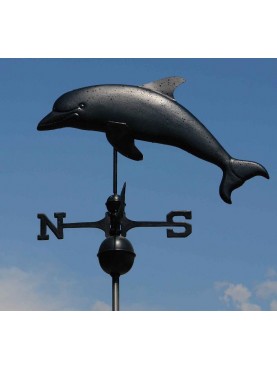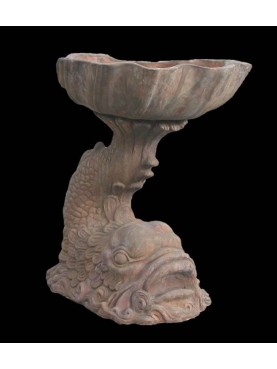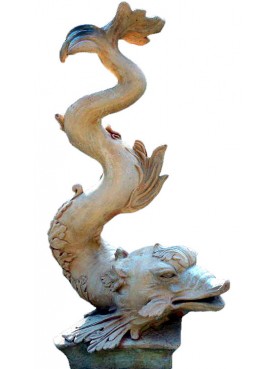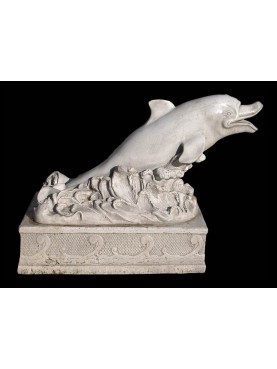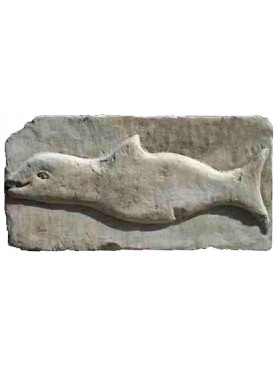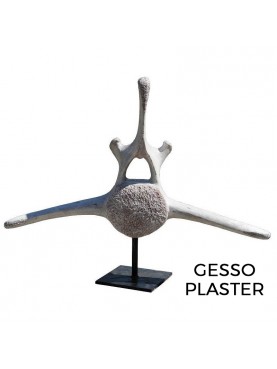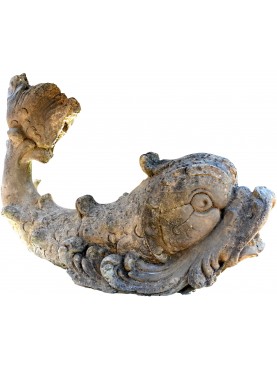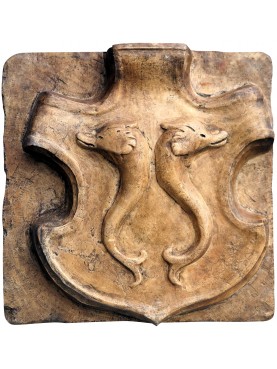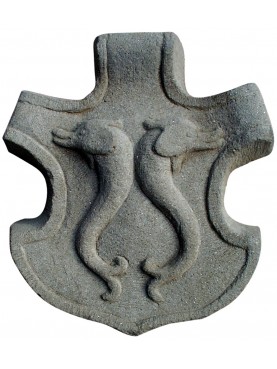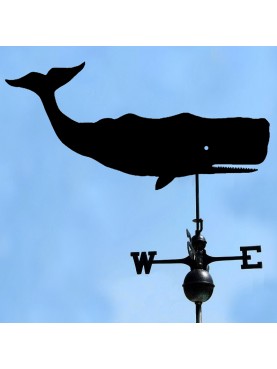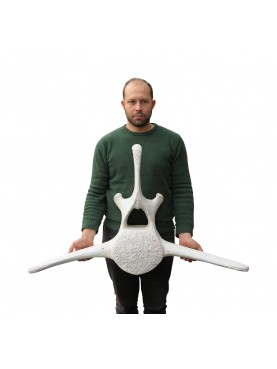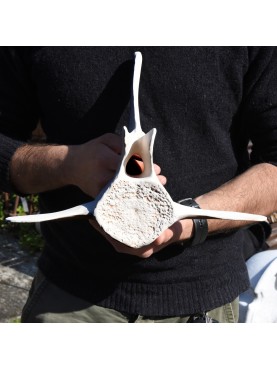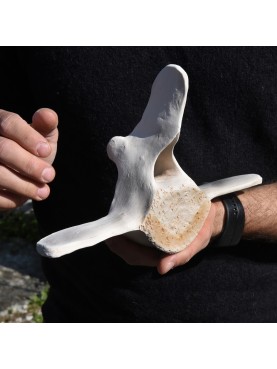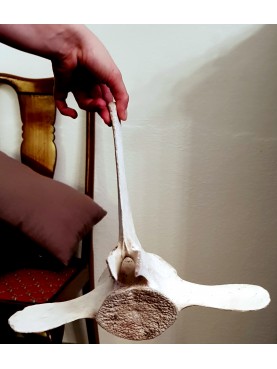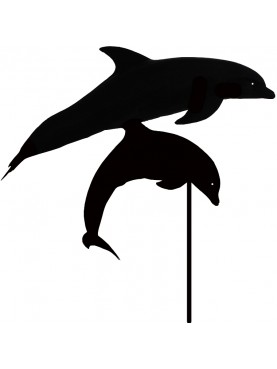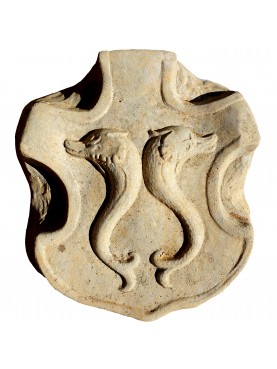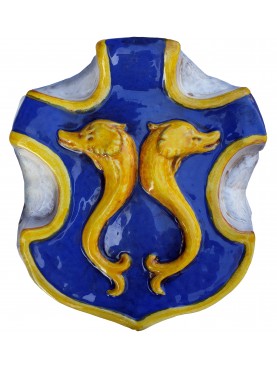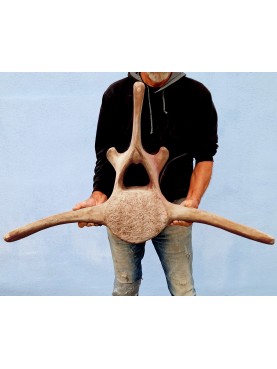weather vane with Dolphin in archaic form
weather vane with Dolphin in archaic form
New
Archaic dolphin that "flies" on Greco-Roman style waves. On the side of the tail a 16th century harpoon indicates the origin of the wind.
In heraldry the dolphin, historically considered the noblest of marine animals, symbolizes naval victory, loyalty, selfless protection, the clement and vigilant prince and also the salvation of men. Giving a dolphin or in any case an image or object that recalls "the dolphin" in the collective imagination means protection and good luck.
This product is no longer in stock
Data sheet
| Height | 59.06 in | 150 cm |
| Width | 64.57 in | 164 cm |
| Thickness | 1.18 in | 3 cm |
| Manufacturing | Recuperando srl | |
| Material | Wrought iron | |
| Note 01 | Rotation system included |
More info
Ancient oriental cultures (Egyptian, Babylonian, etc.) consider the dolphin as an entity that accompanies the deceased towards the afterlife or in connection with the deities of the sea; but the most significant representations come from the Minoan culture and later from the archaic Greek one.
In Greece also, to the God Apollo. In the Homeric hymn dedicated to Pythian Apollo, it is said that Apollo one day became incarnated in a dolphin and jumped onto a ship of Cretan merchants headed for Pylos, diverting it towards Chrysa, the port where the sanctuary of Delphi would later be built and where he had the Python monster has already been killed. Delphòi itself (Delphi) took its name from delfìs, dolphin.
The dolphin in classical mythology is the personification of water, the sacred animal of Poseidon (Neptune) and Venus, the image is very present in the repertoires of funerary art. The well-known myth of Arion is also linked to dolphins, the oldest version of which is narrated by Herodotus. In Hellenic tradition, seeing a dolphin was a good omen. In addition to being considered the manifestation of the god Apollo, he is also considered the protector of sailors. The presence of the dolphin also appears in the mythology of Taras, son of Poseidon, to whom a dolphin appears, a sign that he would have interpreted as a good omen and encouragement to found a city which he then called Saturus.
The symbolism of the dolphin linked to the city of Taranto is linked to the legends of the foundation of the Greek colony of Taras, according to which the Parthenian colonists coming from Sparta and led by Falanto, founded the city which they called Taranto in honor of Taras. Riding the dolphin would instead be Falanto who, again according to legend, during his journey to Italy, was saved by a dolphin after being shipwrecked.
In ancient times the dolphin was considered a fish, it had not yet been recognized that the latter was a mammal. Only Pliny the Elder, in his citations of the characteristics of dolphins, begins to understand their essence as mammals. Furthermore, Pliny describes their ability to emit sounds similar to those of the human voice, also reporting the fact that they loved music and were called simon: the Greeks and Latins called dolphins this way because of their snub-nosed profile (simìs in Greek and simus in Latin).
In Christian symbolism it is interpreted as a prefiguration of the death and resurrection of Christ the Savior, in relation to the biblical story of Jonah, swallowed by the cetacean and rejected after three days, being reborn to new life. The dolphin is also a symbol of the saved Christian, and for this reason depicted (often in pairs for the sake of symmetry) on the sides of the chalice, from which a vegetal efflorescence arises like a tree of life or a flame.






